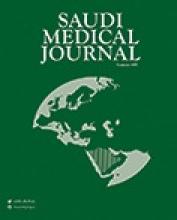Abstract
OBJECTIVE: To determine the seroprevalence of antibodies to hepatitis B virus (HBV) and hepatitis A virus (HAV) among children in Jeddah, Kingdom of Saudi Arabia (KSA) and to evaluate the need of anti-HAV mass vaccination.
METHODS: This study was carried out on random samples of schools located at different regions in Jeddah, KSA during the year 2004. A total of 527 sera, (285 males and 242 females), collected from children aged (4-14 years) were tested for anti-hepatitis B surface (antigen) (HBsAb) and anti-HAV viruses antibodies by enzyme linked immunosorbent assay technique.
RESULTS: Approximately 98% of children received HBV while 49% of received HAV vaccine. For HBV the overall seropositivity was 75% while HAV was 28.7%, whereas seronegativity was 14% for HBV and 70.5% for HAV. Percentage of seropositivity against HBV was elevated in vaccinated versus non-vaccinated children (p<0.000). In vaccinated children against HBV, percentage of seropositivity was elevated in children attending public versus those attending private and no schools (p<0.000) and in Saudi versus non-Saudi children (p<0.05). In vaccinated and non-vaccinated children against HAV, percentage of seropositivity was elevated in children attending public versus those attending private schools (p<0.000) and no schools (p<0.000) and in males (p<0.05) versus females (p<0.01). In vaccinated children, percentage of seropositivity for HBV obtained by age range from 4-6 years was 78.7%, for 7-11 years 74.4% and for 12-14 years 72.6%, whereas for HAV virus, seropositivity was 14.8% for 4-6 years, 38.3% for 7-11 years and 28.6% for 12-14 years.
CONCLUSION: Despite successful coverage of mass vaccination against HBV among school aged children, in Jeddah, KSA, there are high prevalence levels of seronegative with increasing age suggesting outbreak of disease among adolescent. Low prevalence of protective antibodies against HAV in vaccinated and non-vaccinated children may suggest application of mass vaccination program.
- Copyright: © Saudi Medical Journal
This is an open-access article distributed under the terms of the Creative Commons Attribution-Noncommercial License (CC BY-NC), which permits unrestricted use, distribution, and reproduction in any medium, provided the original work is properly cited.






